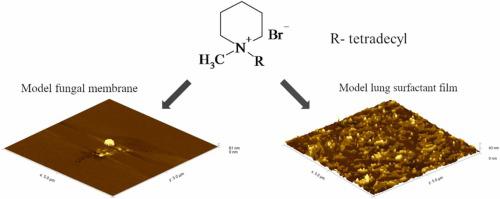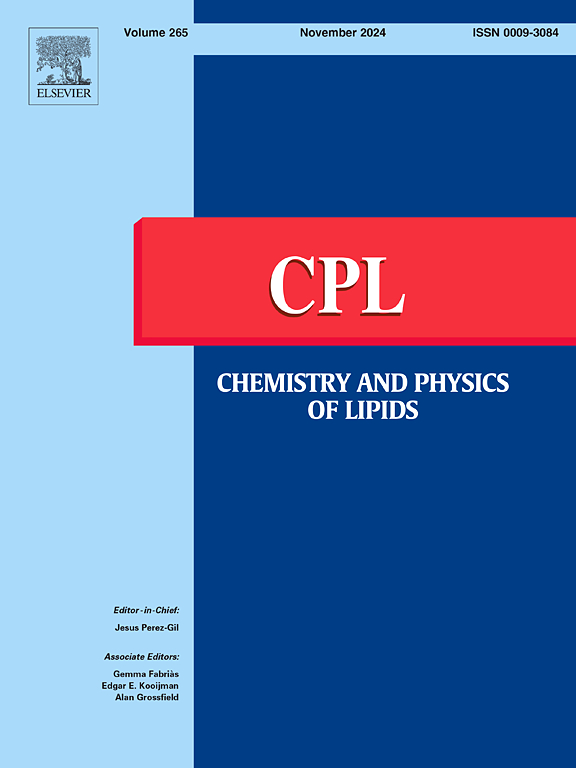This study aimed to investigate the potential of 1-alkyl-1-methylpiperidinium bromides as fungicides and evaluate their impact on the human respiratory system when spread in the atmosphere. We investigated the behavior of membrane lipids and model membranes in the presence of a series of amphiphilic 1-alkyl-1-methylpiperidinium bromides ([MePipCn][Br]), differing in the alkyl chain length (n = 4 − 18). The experiments were performed with the Langmuir monolayer technique using 1,2-dipalmitoyl-sn-glycero-3-phosphocholine (DPPC) and ergosterol (ERG)–the main components of lung surfactant and fungal plasma membrane, respectively and their mixtures with phospholipids and sterols. The mixtures were chosen as the representatives of target and non−target organisms. The surface pressure−area isotherms were obtained by compressing monolayers in the presence of [MePipCn][Br] in the subphase. The results were analyzed in terms of area expansion/contraction and compressibility. The surface activity of the studied organic salts was also studied. In addition, the monolayers were deposited on a solid surface and their topography was investigated using atomic force microscopy. This research implies that the studied compounds may destabilize efficiently the fungal plasma membrane. At the same time we demonstrated the significant impact of 1-alkyl-1-methylpiperidinium bromides on the lung surfactant layer. The interaction between [MePipCn][Br] and model membranes depends on the concentration and alkyl chain length of organic salt. The key role of contact time has been also revealed. The results may be helpful in the reasonable development of new agrochemical products aiming at the treatment of fungal infections in plants. In addition, our study indicates the significance of proper safety management while spreading the fungicides in the environment.



